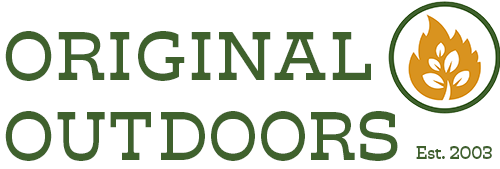What can I do with Hawthorn Berries?
The fruits are easy to identify and collect in large quantities and can be used to make fruit leathers (another name for a fruit roll-up),…
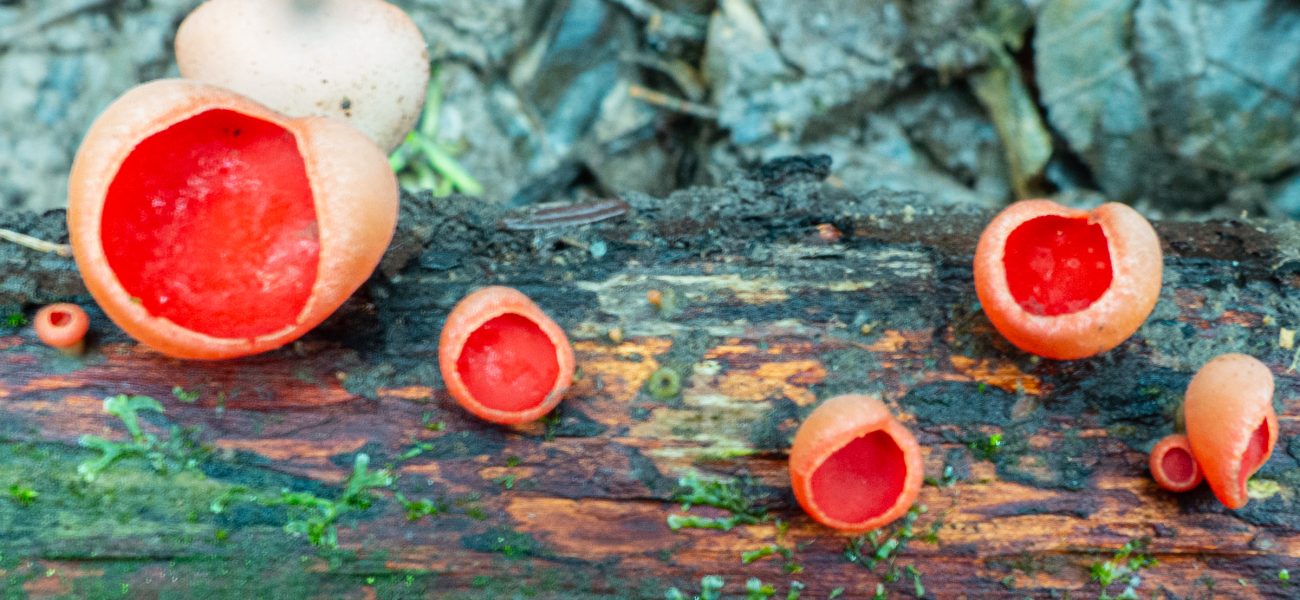
22nd January 2020
This distinctive fungi looks like something straight out of Lord of the Rings (or your other chosen fantasy film). You have probably seen this small fungus adding some colour to the otherwise often dull winter palette as it pushes it’s way through moss and leaf litter in order to blow it’s spores across the woodland. Don’t be put off by the red colour warning, as it is in fact considered edible.
This jewel is found growing worldwide but is most widely distributed in the Northern Hemisphere and we’re lucky in the UK as here it is common and widespread. Scarlet Elf Cups grow on rotting fallen wood in damp, deciduous woodland. They are most commonly found on moss-covered Ash, Willow, Hazel and Elm, although at the stage of tree decay when you are likely to see fruiting bodies the log is likely going to be hard to identify. This species favouring gives Ash dieback disease Hymenoscyphus fraxineus a deeper meaning for those with a love of elf cups. A likely increase in decaying fallen Ash and possible corresponding rise in the fungi associated with it before the inevitable decline in Ash trees potentially leading to a decrease in suitable sites for this striking fungi. The best time to look for these is during the winter months and into early spring and they tend to flush with sudden drops in temperature.
This is very much up for discussion depending on which sources you read. Here at OO HQ we have a range of books, some of them have these little red gems down as being inedible, even toxic, whereas others state that they are edible. Some sources differentiate between S. coccinea and S.austriaca both in how common they are and the edibility. It seems to be the guidebooks more which denote this little fungus as inedible, possibly erring on the side of caution, many websites (perhaps with more up-to-date information) state it as being edible although care is always recommended when trying any fungus for the first time and it is best to try in small amounts and cooked at first. Some may be put off eating Scarlet Elf Cups by the colour red often being a warning in the natural world, or by the slightly leathery appearance. However when cooked up they are a lesser known culinary delight and rather pleasing to the eye. The texture isn’t like that of your standard mushroom and they are at their best when fried or in stews which highlight their subtle, earthy flavours.
This is one fungi which is hard to mistake for anything else with it’s bright red colouration without any spots or other blemishes on the upper cup-shaped surface, and a pale outer which is covered in a thin layer of felted short white hairs. When young they appear as a goblet with a short stem which disappears with age whilst the edge of the cup portion becomes tattered. When young they do look as you would picture a piece of kitchenware for an elf would appear- small, cute and brightly coloured. For those based in our home region of North Wales or in North Somerset, there have been a few reports of a yellow variety (Sarcoscypha austriaca var. lutea) in 2007/8, however these are a rarity.
Other similar species are the less common Ruby Elf Cup S.coccinea and the Orange Peel Fungus Aeuria aurantia. Both of these are also edible so a mistake made isn’t to be worried about. The Ruby Elf Cup is more likely to be mistaken but is much more rare than the Scarlet Elf Cup. Orange Peel Fungus grows in a different habitat, mainly being found on bare soil or amongst grass in lawns or at roadsides. It is also more orange than red, and does look remarkably like orange peel- so much so that some mycologists have been known to pounce on cast off’s nearby popular picnicking spots!
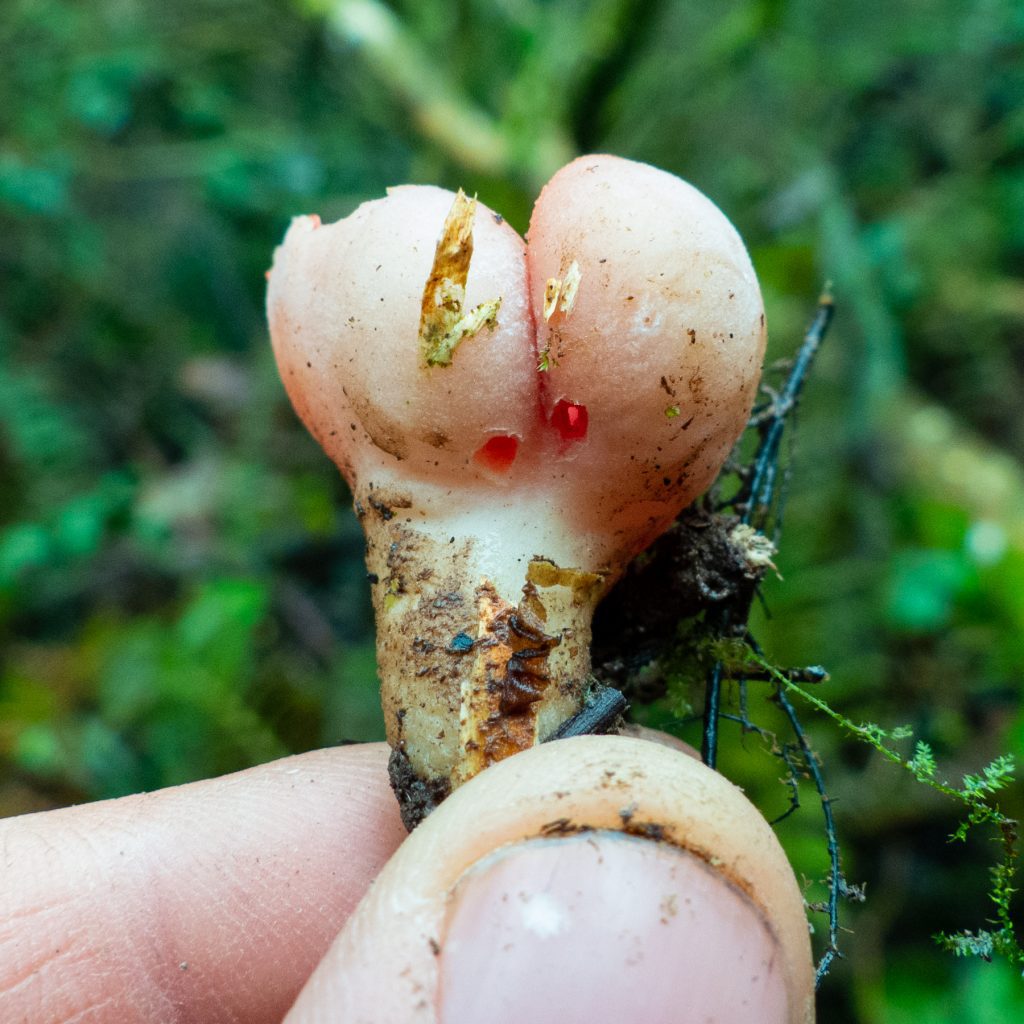
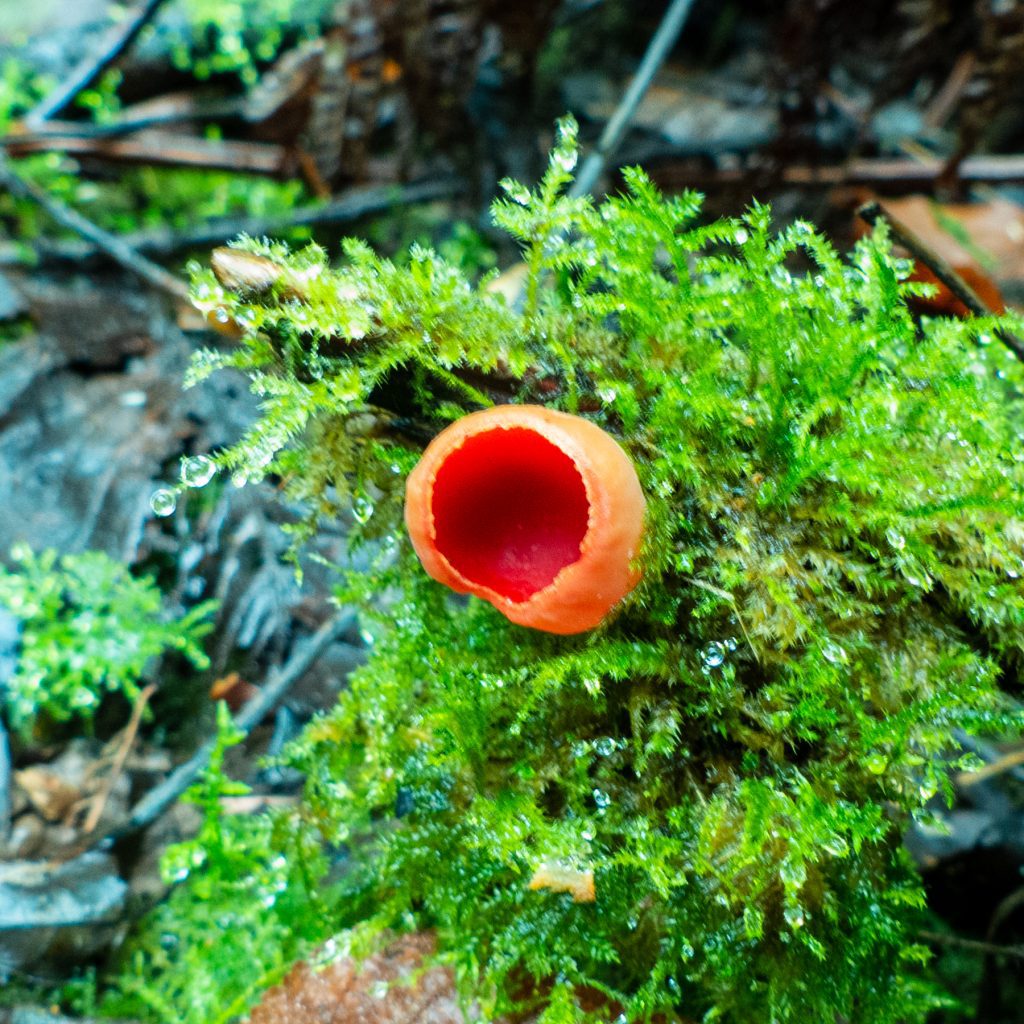
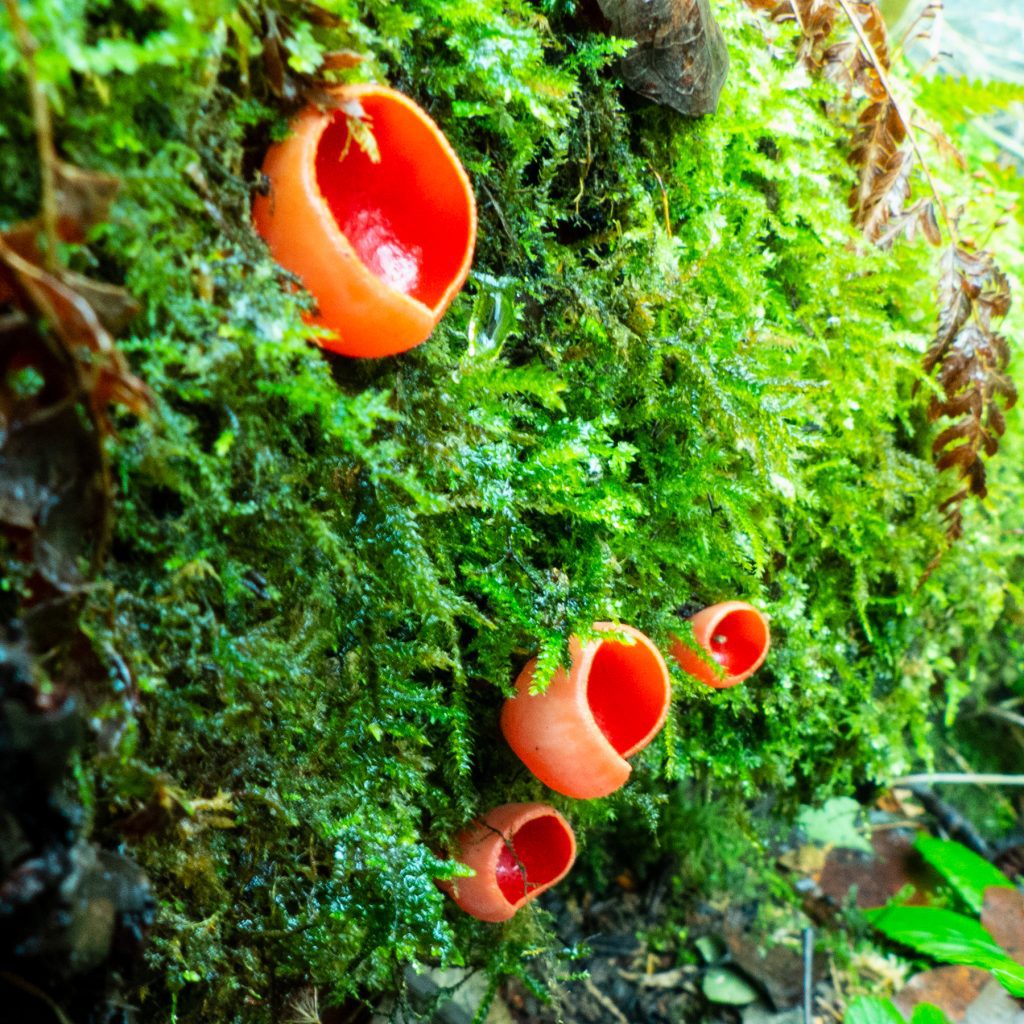
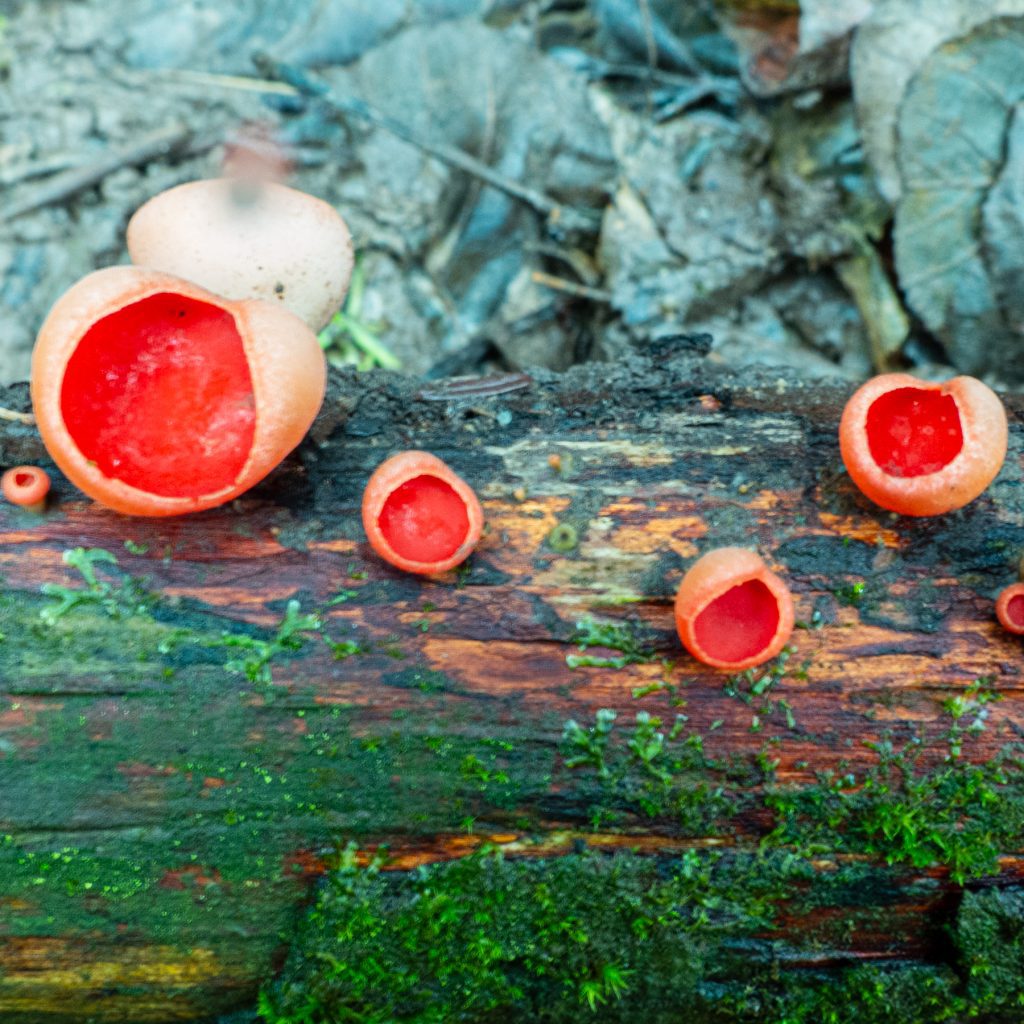
Foraging and hunting for wild food is a potentially hazardous activity. Whilst we try to make sure these wild food guides are as accurate as possible there is ALWAYS the possibility of misidentifying a plant or other item and the descriptions given might also apply to similar toxic plants. Common names cannot be relied upon as they change from region to region, and there are some similar names for very different plants.
You should always be confident of the identification of a plant, fungus or lichen BEFORE you touch it and especially before you put it anywhere near your mouth. The best way to do that is by checking with a good wild flower key or identification book, and ideally cross-referencing between more than one book. We have a blog post on some of the foraging guide books that we recommend HERE. We also deliver foraging and wild foods training in person and online.
A Mountain Leader with over a decade of experience across the UK and overseas, Richard is our Lead Instructor and a partner in Original Outdoors. He is a specialist in temperate wilderness skills and the wild foods of the British Isles, and also works as a consultant for various brands and organisations. Richard lives in North Wales.
A Life More Wild is the philosophy which underpins everything we do.
It encompasses practical skills, personal development, community learning and a journey to live more intentionally.
The fruits are easy to identify and collect in large quantities and can be used to make fruit leathers (another name for a fruit roll-up),…
North Wales is a fantastic place to look for fungi, with a wide range of habitats and ideal climate. If you’ve been out to a…
This mushroom can be used in stocks, dried and ground down into a powder, or cooked into casseroles, stir fry’s and soups. Our favourite use…
Sloes are ripe before the first frosts these days, but you can use a freezer to imitate the affect of a frost and have some…
